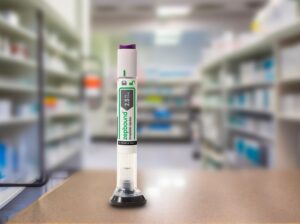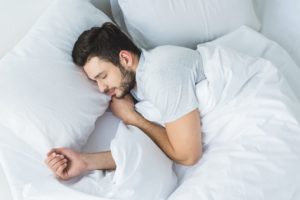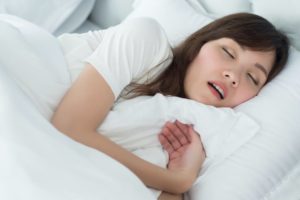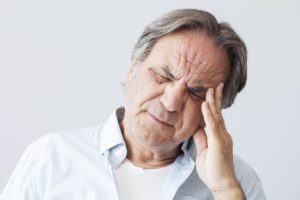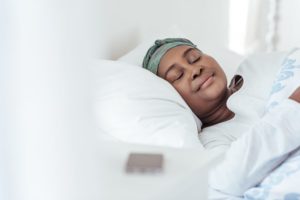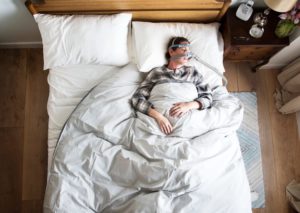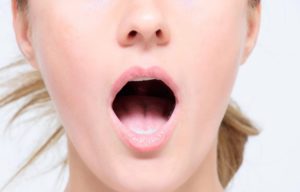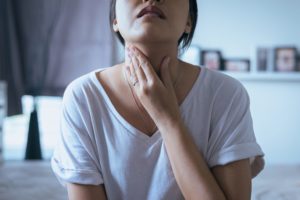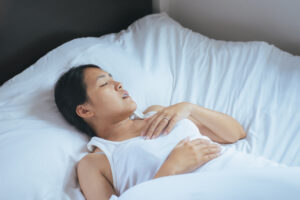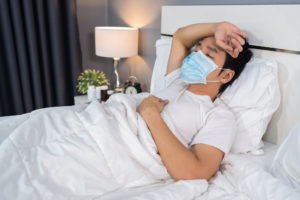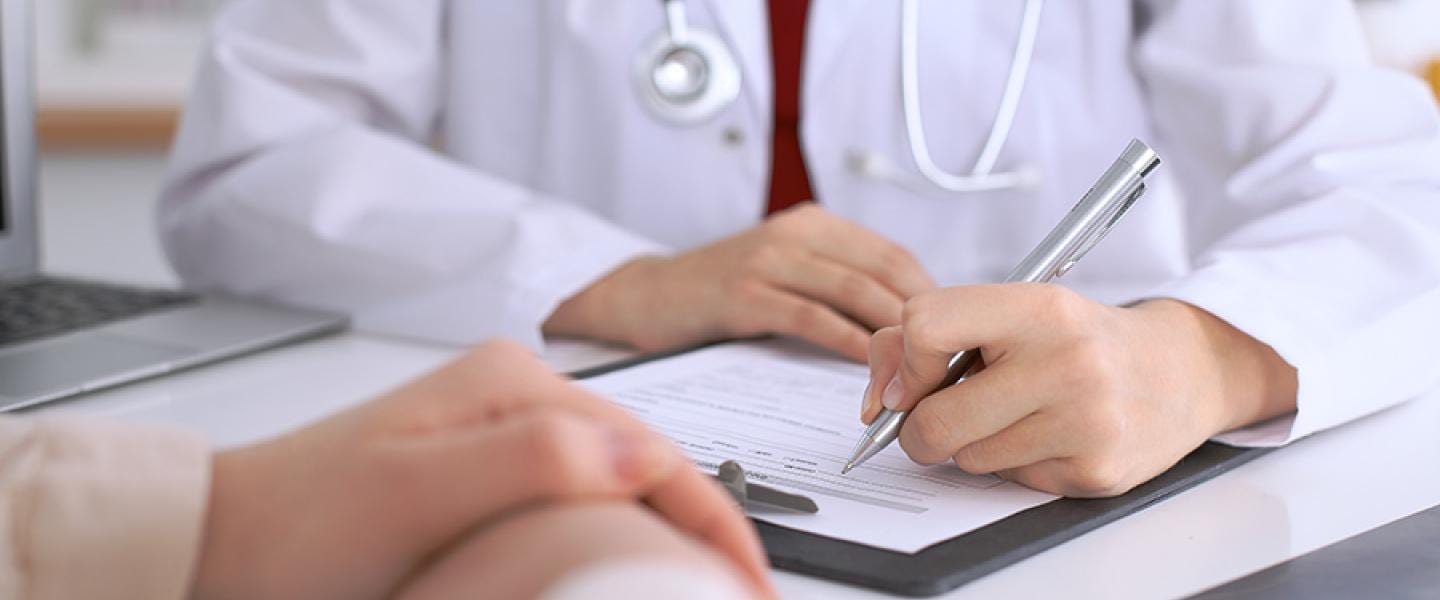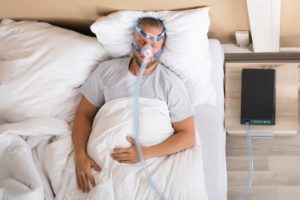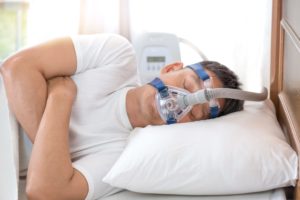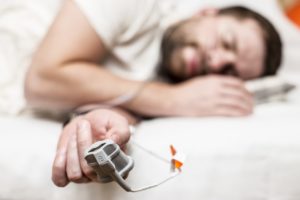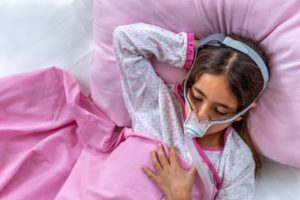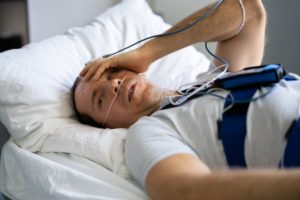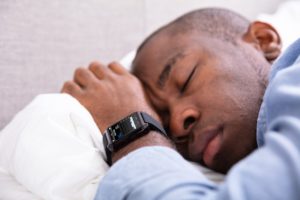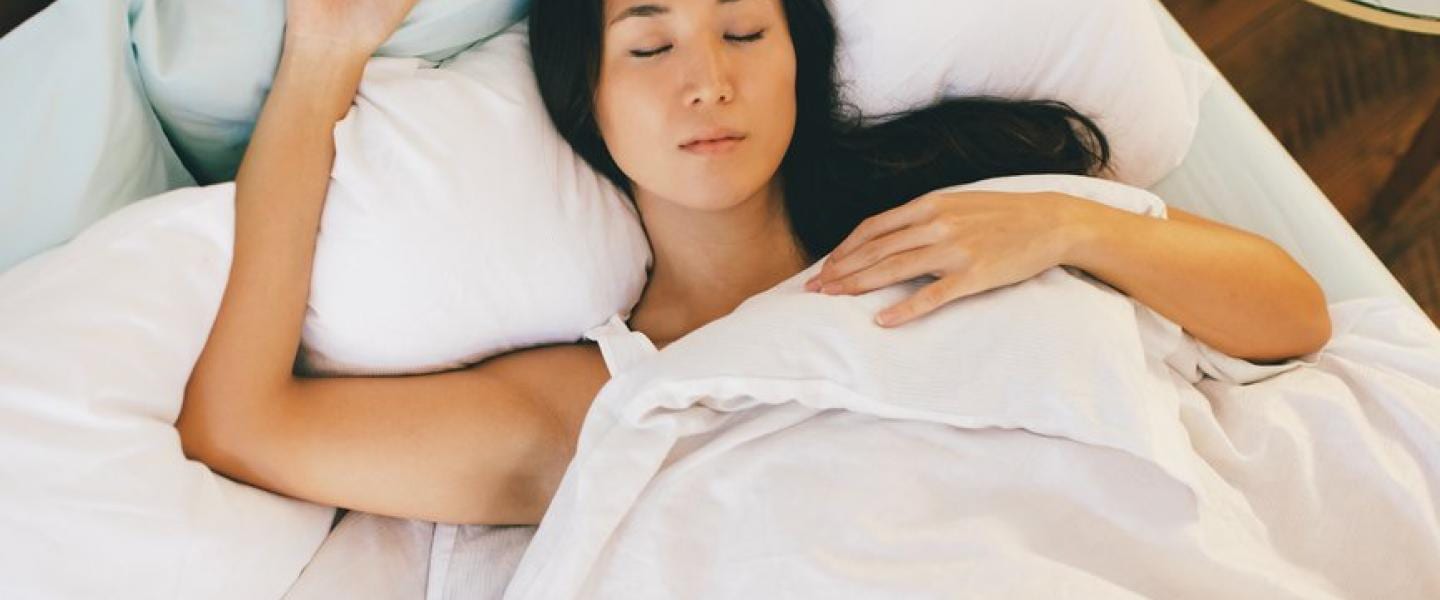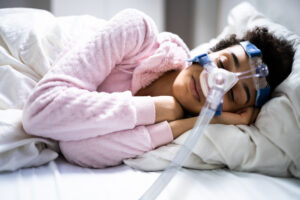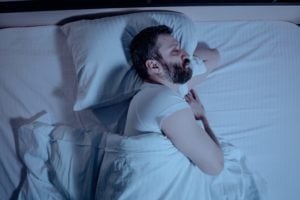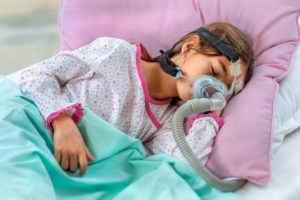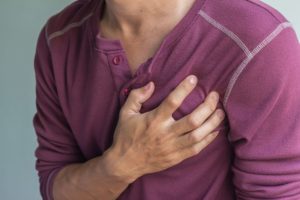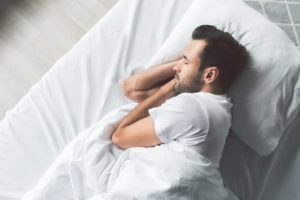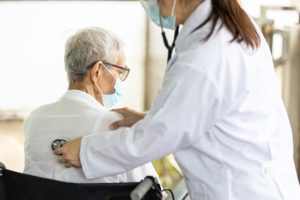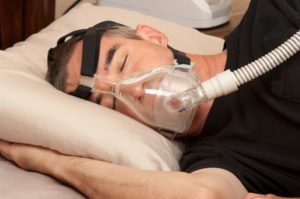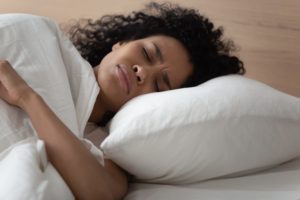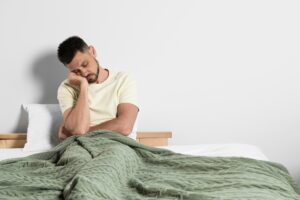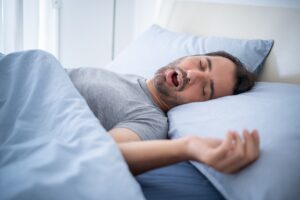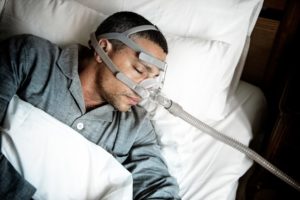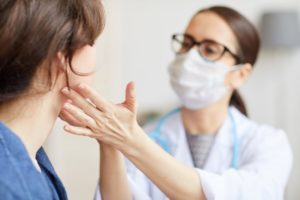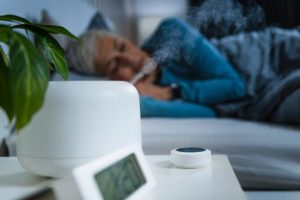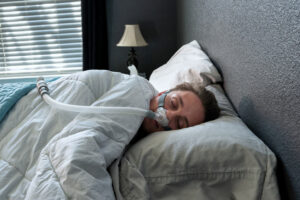When you buy through our links, we may earn a commission. Products or services may be offered by an affiliated entity. Learn more.
Sleep Apnea Mouth Guards
- A mouth guard can be used to treat sleep apnea by moving the lower jaw forward and keeping the airway open.
- Mouth guards may be effective for some cases of mild to moderate sleep apnea.
- There are several types of sleep apnea mouth guards, but the success of each depends on the individual’s unique situation.
An estimated 10% to 30% of adults have obstructive sleep apnea (OSA), although the condition often goes undiagnosed. In OSA, a person’s airway completely or partially collapses during sleep, causing gasping, choking, and snoring sounds, along with lowered blood oxygen levels and sleep disturbances.
Sleep apnea treatment options include continuous positive airway pressure (CPAP) devices, surgery, and oral appliances or mandibular advancement devices. Sleep apnea oral appliances move the jaw or tongue forward so the airway can stay open during sleep. While these oral appliances may be referred to as mouth guards, it is important to note that they differ from over-the-counter devices that are designed to prevent teeth grinding or snoring.
We take a closer look at the different types of oral appliances used to treat sleep apnea, and cover what to consider when discussing this treatment option with your health care provider.
Is Your Snoring a Health Risk?
Answer three questions to understand if you should be concerned.
How Mouth Guards Treat Sleep Apnea
Oral appliances for sleep apnea address underlying structural factors that contribute to obstructive sleep apnea, such as a small lower jaw or a tongue that falls back into the throat. These physical features can obstruct a person’s airway, resulting in sleep-disordered breathing symptoms. Most commonly, sleep apnea mouth guards move the lower jaw forward, opening up the airway, although some adjust the tongue’s position forward instead.
Types of Sleep Apnea Mouth Guards
Sleep apnea mouth guards come in different designs and materials. They are often custom-fitted, so the same type may look different depending on the person it was made for. However, there are three main types.
Mandibular Advancement Devices (MADs)
Also known as a mandibular repositioning device (MRD) and mandibular advancement splint (MAS), a mandibular advancement device moves the lower jaw into a forward position. The word mandibular refers to the lower jawbone.
Some MADs have a one-piece design, while others have a two-piece design, with upper and lower guards that are connected. One-piece designs fix both the upper and lower jaw in place, which some people find restrictive . Because two-piece designs have separate pieces for the upper and lower jaw, they allow for more movement and opening of the lower jaw, which some people may find more comfortable. However, oral appliances that allow more movement may not be ideal for people who sleep on their backs .
Tongue-Retaining Devices (TRDs)
Tongue-retaining devices keep the tongue in a forward position so it does not collapse back into the airway. These somewhat resemble a pacifier, except that you stick your tongue outward into the device, which is held in place by suction. Some people consider TRDs to be less comfortable than MADs.
Soft Palate Lifters
Soft palate lifters raise the soft palate and the uvula. The aim is to reduce vibrations from the soft palate, but their effectiveness has not been proven.
Researchers and manufacturers continue to innovate and test new designs for sleep apnea mouth guards, with the goal of improving comfort and effectiveness. For example, one newer design that combined a MAD and a TRD was shown to be more effective in reducing respiratory events than the MAD alone.

Benefits of Sleep Apnea Mouth Guards
Research has found that sleep apnea oral appliances can provide the following benefits for people with obstructive sleep apnea:
- Reduce the number of pauses in breathing (apneas) or episodes of shallow breathing (hypopneas)
- Significantly improve blood oxygen levels
- Decrease the frequency and volume of snoring
- Reduce daytime sleepiness
After a few years of treatment, sleep apnea mouth guard usage is associated with improvements in diastolic and systolic blood pressure, as well as continued improvement in quality of life and decreased daytime sleepiness.
Sleep apnea oral appliances can be a safe and effective alternative for the large number of people with OSA who do not respond well to CPAP therapy. As many as 46% to 83% of people do not continue with CPAP therapy due to discomfort or another reason. If people find mouth guards more comfortable, they may be more likely to follow through with their treatment as directed.
Studies show that people who use an oral appliance to treat OSA may use it one more night per week, on average, than people who use CPAP, and nearly two hours longer per night. As a baseline, sleep experts recommend using either a mouth guard or CPAP machine for at least four hours per night for OSA therapy. Only 43% of people using CPAP meet this recommendation, compared with 76% of those using a mouth guard.x
Risks of Sleep Apnea Mouth Guards
While oral appliances are a good option for some, they are not always as effective in treating OSA as CPAP. Nearly twice as many people completely treat OSA with CPAP than with a mouth guard. Research also suggests that CPAP therapy contributes to a further reduction in respiratory events during sleep and a larger improvement in blood oxygen levels. And for about one-third of people, mouth guards do not significantly improve their symptoms .
Although some people find oral appliances more comfortable than CPAP, not all do. One small survey found that more than half of the respondents had stopped using their mouth guard within a year due to discomfort. However, those who continued wearing the mouth guard reported better sleep quality, with less snoring and daytime sleepiness.
Sleep apnea mouth guards can also cause changes in teeth position or bite. In some cases these changes can actually be beneficial, such as reducing overbite or overjet, which is when the upper teeth bend forward at an angle over the bottom teeth. Often, these changes are barely noticeable, but they may appear within six months of starting treatment.
Are Sleep Apnea Mouth Guards Safe?
Generally, sleep apnea mouth guards are considered safe, but they can have side effects. It is important to work closely with your health care provider when selecting and using a sleep apnea mouth guard.
Side effects are most common in the first two months and usually go away as a person gets used to the device. Side effects may include:
- Drooling
- Dry mouth
- Gum irritation
- Headaches
- Tooth pain
- Temporomandibular joint (TMJ) discomfort
For some people, TMJ pain may be more acute initially, though it typically decreases over time and resolves in most cases within 6 to 12 months.
Talking to Your Doctor About Mouth Guards for Sleep Apnea
If you are interested in learning more about mouth guards, talk to a primary care provider, sleep specialist, and dentist. After your initial exam and fitting, schedule regular follow-up appointments with your dentist and sleep physician to ensure the mouth guard still fits well and is effectively treating your sleep apnea.
Frequently Asked Questions About Sleep Apnea Mouth Guards
How Much Do Sleep Apnea Mouth Guards Cost?
Overall, a sleep apnea mouth guard may cost
less
than CPAP therapy. The specific price can depend on several factors. The total cost includes the cost of the device and cleaning solution, as well as the cost of the initial exam and follow-up dental appointments for fitting the device.
People interested in an oral appliance should check with their insurance provider to see if it is covered. In general, two-piece mouth guards are
more expensive
than one-piece designs.
How Do I Choose a Sleep Apnea Mouth Guard?
The effectiveness of a sleep apnea mouth guard depends on how often you use it, so it is important to find the best device type for you. Two-piece designs are generally considered more comfortable, but studies have shown that some people prefer a one-piece design and have better results with those. One-piece designs can also be more affordable.
The American Academy of Sleep Medicine recommends getting a custom-fitted, adjustable mouth guard through a dentist, as these are the most effective. Custom oral appliances are made from dental casts of your teeth.
Lower-cost thermoplastic mouth guards are also available. These must be heated in boiling water so they soften. Then, you self-fit the device by biting into it and moving your lower jaw forward. Once cooled, the shape sets. While thermoplastic options are cheaper, they are also less effective, and people often prefer the custom-fitted versions.
Consult a sleep doctor and dentist for their recommendations.
Who Are Sleep Apnea Mouth Guards Best For?
The American Academy of Sleep Medicine recommends sleep apnea mouth guards for:
– People with mild to moderate OSA
– People who snore but do not have OSA
– People with severe OSA who did not respond well to or do not want CPAP therapy
Some research suggests MADs may be
particularly effective
in people with lower body weights and narrower areas behind the tongue or soft palate, regardless of the severity of their OSA.
Do I Need a Prescription for a Sleep Apnea Mouth Guard?
People with sleep apnea should work closely with their doctor, orthodontist, or dentist when considering a sleep apnea mouth guard. While some options are available without a prescription, custom-fitted oral appliances are more effective at treating sleep apnea.
How Often Should You Clean Your Mouth Guard?
Follow the device’s instructions for how to clean your sleep apnea mouth guard and how often. Some manufacturers, like SomnoMed, recommend daily cleaning along with your typical morning hygiene routine. Use the recommended cleaning solution and brush. Then, rinse, dry, and store according to the instructions. Soak and disinfect the mouth guard on a weekly basis using the recommended cleaning solution or tablet.
When Should I Consider Other Treatment Options?
Your doctor can help determine the best OSA treatment for you based on the severity of your sleep apnea, cost, comfort preferences, and other factors.
There are a number of treatment options for OSA. CPAP machines are considered the primary treatment for OSA — especially for severe OSA — but they require electricity and might feel bothersome to some people. For those whose symptoms get significantly worse when sleeping on their back, special positioning devices can help maintain a side sleeping position. Weight loss may also be recommended as a complement to other therapy, such as CPAP.
For children, a first-line treatment option may be surgery to remove the tonsils or adenoids. Additional surgical options are available for adults, such as a uvulopalatopharyngoplasty, which removes the uvula and tissue from the soft palate, or maxillomandibular advancement, where the upper and lower jaws are repositioned.

Still have questions? Ask our community!
Join our Sleep Care Community — a trusted hub of sleep health professionals, product specialists, and people just like you. Whether you need expert sleep advice for your insomnia or you’re searching for the perfect mattress, we’ve got you covered. Get personalized guidance from the experts who know sleep best.
References
12 Sources
-
Kline, L. R. (2022, April 1). Clinical presentation and diagnosis of obstructive sleep apnea in adults. In N. Collop (Ed.). UpToDate., Retrieved September 26, 2022, from
https://www.uptodate.com/contents/clinical-presentation-and-diagnosis-of-obstructive-sleep-apnea-in-adults -
Slowik, J. M., & Collen, J. F. (2021). Obstructive sleep apnea. StatPearls., Retrieved April 8, 2022, from
https://pubmed.ncbi.nlm.nih.gov/29083619/ -
Sutherland, K., Vanderveken, O. M., Tsuda, H., Marklund, M., Gagnadoux, F., Kushida, C. A., & Cistulli, P. A. (2014). Oral appliance treatment for obstructive sleep apnea: An update. Journal of Clinical Sleep Medicine, 10(2), 215–227.
https://pubmed.ncbi.nlm.nih.gov/24533007/ -
Ishiyama, H., Hasebe, D., Sato, K., Sakamoto, Y., Furuhashi, A., Komori, E., & Yuasa, H. (2019). The efficacy of device designs (mono-block or bi-block) in oral appliance therapy for obstructive sleep apnea patients: A systematic review and meta-analysis. International Journal of Environmental Research and Public Health, 16(17), 3182.
https://pubmed.ncbi.nlm.nih.gov/31480465/ -
Sutherland, K., & Cistulli, P. A. (2019). Oral appliance therapy for obstructive sleep apnoea: State of the art. Journal of Clinical Medicine, 8(12), 2121.
https://pubmed.ncbi.nlm.nih.gov/31810332/ -
Ramar, K., Dort, L. C., Katz, S. G., Lettieri, C. J., Harrod, C. G., Thomas, S. M., & Chervin, R. D. (2015). Clinical practice guideline for the treatment of obstructive sleep apnea and snoring with oral appliance therapy: An update for 2015. Journal of Clinical Sleep Medicine, 11(7), 773–827.
https://pubmed.ncbi.nlm.nih.gov/26094920/ -
Basyuni, S., Barabas, M., & Quinnell, T. (2018). An update on mandibular advancement devices for the treatment of obstructive sleep apnoea hypopnoea syndrome. Journal of Thoracic Disease, 10(Suppl 1), S48–S56.
https://pubmed.ncbi.nlm.nih.gov/29445528/ -
Dieltjens, M., & Vanderveken, O. (2019). Oral appliances in obstructive sleep apnea. Healthcare, 7(4), 141.
https://pubmed.ncbi.nlm.nih.gov/31717429/ -
Nishigawa, K., Hayama, R., & Matsuka, Y. (2017). Complications causing patients to discontinue using oral appliances for treatment of obstructive sleep apnea. Journal of Prosthodontic Research, 61(2), 133–138.
https://pubmed.ncbi.nlm.nih.gov/27561445/ -
Sadatsafavi, M., Marra, C. A., Ayas, N. T., Stradling, J., & Fleetham, J. (2009). Cost-effectiveness of oral appliances in the treatment of obstructive sleep apnoea-hypopnoea. Sleep & Breathing, 13(3), 241–252.
https://pubmed.ncbi.nlm.nih.gov/19229577/ -
Isacsson, G., Fodor, C., & Sturebrand, M. (2016). Obstructive sleep apnea treated with custom-made bibloc and monobloc oral appliances: A retrospective comparative study. Sleep & Breathing, 21(1), 93–100.
https://pubmed.ncbi.nlm.nih.gov/27380034/ -
Park, P., Jeon, H. W., Han, D. H., Won, T. B., Kim, D. Y., Rhee, C. S., & Kim, H. J. (2016). Therapeutic outcomes of mandibular advancement devices as an initial treatment modality for obstructive sleep apnea. Medicine, 95(46), Article e5265.
https://pubmed.ncbi.nlm.nih.gov/27861349/


